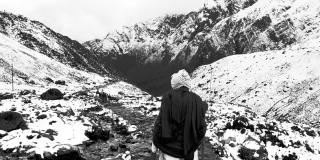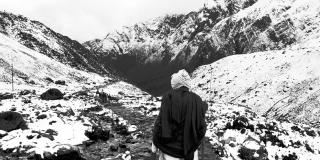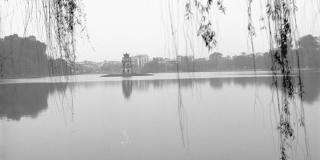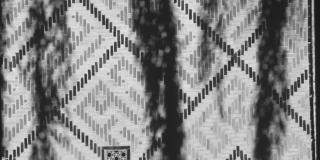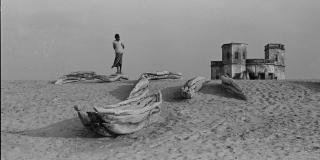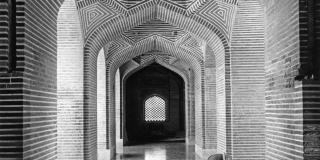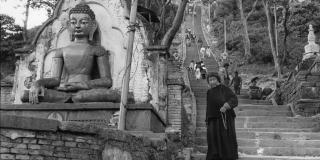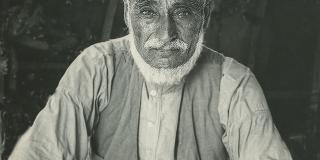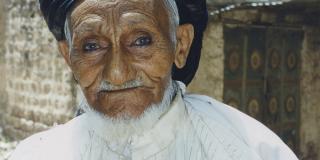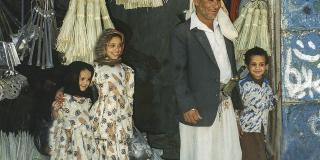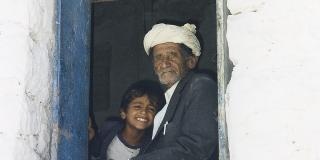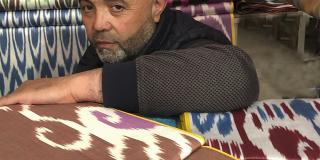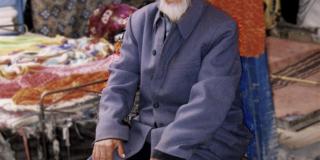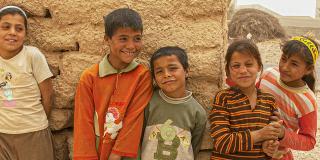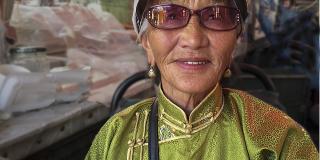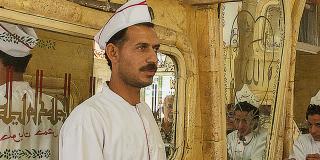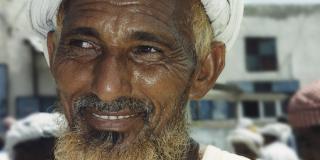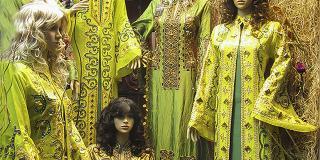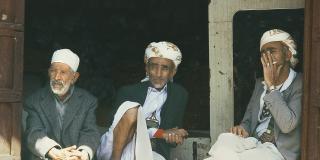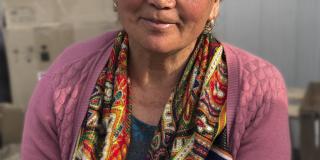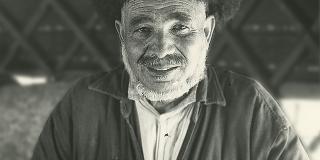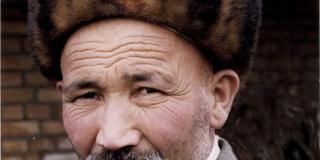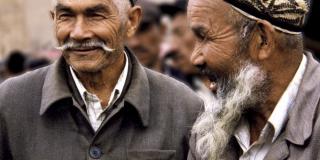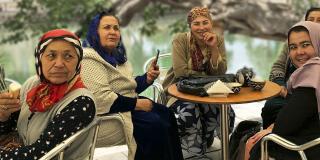Arvind Garg and Jackie Mintz, Two Photographers in Dialogue With World Traveler Ibn Battuta
“An exhibition is not only a group of photographs but a complex construction. It is a question of selecting a collection of images that will speak to one another, follow one another, glance at one another. An exhibition is a book where the separate pages fly in the air to take the viewer’s hand and lead the viewer far from the viewer’s daily life.” (Hamideddine Bouali)
I. Who is Ibn Battuta? Abu Abdullah Muhammad Ibn Battuta was a Moroccan Muslim who lived in the 14th century, was trained in Islamic Law, and who traveled from Morocco to many countries, going as far as China. He is the author of a book of his travels, A Gift to Those Who Contemplate the Wonders of Cities and the Marvels of Travelling, which is known as The Rihla (Journey), which he dictated to the scribe Ibn Juzayy, at the request of the Sultan.
An outline of Ibn Battuta’s travels:
1325-1351: from Morocco to Cairo, Jerusalem, Damascus, Medina, Mecca, Iraq, Persia, the Dead Sea, East Africa, the Arabian Sea, Anatolia, the Lands of Golden Horde and the Chagatai (The Mongol Empire in Central Asia), Delhi (the capital of Muslim India), Maldives, Sri Lanka, the Straits of Malacca, China, return to Morocco, Andalusia (the Muslim part of Spain), the Mali Empire, Niger, and other West African areas.
1355: back in Morocco he began to dictate The Rihla to the scribe Ibn Juzayy.
His travels were not undertaken as a colonial effort, nor as a political or commercial enterprise, but as a way to satisfy the recommendations of his religion and his curiosity about the world and the peoples in it. The scientific community considers his Rihla to be a major work that teaches us about the customs and practices of both Muslim and non-Muslim peoples of his time. The work has been translated into many languages, publications and research have been devoted to him across the globe, and several versions of the Rihla have been adapted for children and young people. A film focusing on his travels has been made and a museum bearing his name and dedicated to the story of his travels has opened in Tangier, Morocco, his birthplace.
His travels were peaceful. He traveled for nearly three decades, covering almost 120,000 kilometers on the back of a donkey, horse or camel, on foot and by sea, alone or in a group, visiting more than forty countries most of which were Muslim at that time, on three continents. Neither attacks by pirates, storms, accidents at sea nor, later, the plague subdued his passion for travel. His writings speak of the beauty of historical and religious monuments, the aesthetics of architecture, the splendor of palaces, and also talk about religious dynamism, economic poverty and prosperity, schools attended by girls and boys, the role of women, the town-planning of cities, and the vegetation in the countries he visited. Behaviors that offended his sensibility were related to his religious beliefs concerning proper codes for food and dress. He benefitted from the hospitality of important figures and solidarity throughout his journey as he sought to gain knowledge of the world and of himself, and he performed as a judge in Delhi and the Maldives. He continues to be a source of inspiration for many young Muslims throughout the world.
In his Rihla, Ibn Battuta highlights a practice he witnessed in China which we might see as a forerunner of the identity photos and photographic portraits of today. He writes, “The Chinese are of all peoples the most skillful in the arts and possessed of the greatest mastery of them. ... I myself saw an extraordinary example of this gift of theirs. I never returned to any of their cities after I had visited it a third time without finding my portrait and the portraits of my companions drawn on the wall and on sheets of paper exhibited in the bazaars. When I visited the Sultan’s city I passed with my companions through the painters’ bazaar on my way to the Sultan’s palace. We were dressed after the Iraqi fashion. On returning from the palace in the evening, I passed through the same bazaar, and saw my portrait and those of my companions drawn on a sheet of paper which they had affixed to the wall. Each of us set to examining the other’s portrait [and found that] the likeness was perfect in every respect. I was told that the Sultan had ordered them to do this, and that they had come to the palace while we were there and had been observing us and drawing our portraits without our noticing it. This is a custom of theirs, I mean making portraits of all who pass through their country. In fact, they have brought this to such perfection that if a stranger commits any offence that obliges him to flee from China, they send his portrait far and wide. A search is then made for him and wheresoever the [person bearing a] resemblance to that portrait is found he is arrested.”
II. Two photographers and photographs of their travels.
Several centuries separate Ibn Battuta from Arvind Garg and Jackie Mintz, yet this collection of photographs can be seen in dialogue with Ibn Battuta. Each photograph provides an insight into the artist’s inner journey as they immersed themselves in the world previously visited by Ibn Battuta. These works testify to their own inner Rihla, their journey through time and space. And the works are also an opportunity for us, observers, to grasp how discovering the splendors of the world has motivated many of us to seek out wonders and beauty wherever they may be found.
A. Who are Arvind Garg and Jackie Mintz?
Arvind Garg, born in India, studied English literature at the University of Wisconsin in the late 1970s, but soon after he was drawn to photography and moved to New York City in 1985. His work has been published by the Corbis Encyclopedia, the New York Times Sunday Travel Section, and national magazines such as Harper’s, Audubon Magazine, Savor (Food and travel). He has had several solo exhibits of his photographs and has participated in group exhibitions in many places in the U.S. including New York City, as well as in India. Arvind's photographs have been acquired by the New York Public Library, Brooklyn Museum, The Wisconsin Historical Society, Madison Museum of Contemporary Art and the Herbert Johnson Museum at Cornell University in Ithaca, N.Y. He is the author of more than twenty books of photographs devoted to Fine Art, portraits, travel, street photography as well as family and personal life.
Jackie Mintz, born in Shanghai, was a child when her family moved to United States. After studying at Radcliffe College in the late 1950s where she majored in Linguistics and Semitic languages, with courses in Arabic and Persian, she continued graduate studies at Yale University in Linguistics, with classes in the Sanskrit and Avestan languages. She also took courses on Iranian languages at Michigan Summer School and at Princeton. A lawyer by profession and having already traveled to Lebanon and Syria starting in the 1950s and to Iran during the 1960s, Jackie continued to pursue her interest in those regions and the countries she has visited include Turkey, Yemen, Egypt, Tunisia, Morocco, Afghanistan, Mongolia, Uzbekistan, Syria, Georgia, and China. She has long had a deep interest in art and has participated in several group exhibitions where her paintings and photographs have been shown.
III. The exhibition’s curator, Lilia Labidi
Lilia Labidi, the curator of this exhibition, is an anthropologist and psychologist, formerly professor at the University of Tunis, Tunisia, and has taught at universities in France, the USA, Egypt, and Singapore, and lectured in a number of countries in Europe, the Maghreb, Africa, and Asia, and is a Global Fellow at the Woodrow Wilson Center, Washington DC. She is the author of several books and numerous articles on the Arab world, treating subjects such as the history of the feminist movement, the aftermath of the “Arab spring,” among others.
She organized several documentary exhibitions on subjects that include women's movements in Tunisia, wedding photographs over three generations in Tunisia, and installations on political violence. Her most recent publication is “Women artists and contemporary art in the Maghreb...” (In L. H. Skalli and N. Eltantawy (Eds.). The Palgrave Handbook of Gender, Media and Communication in the Middle East and North Africa. 2023.)
